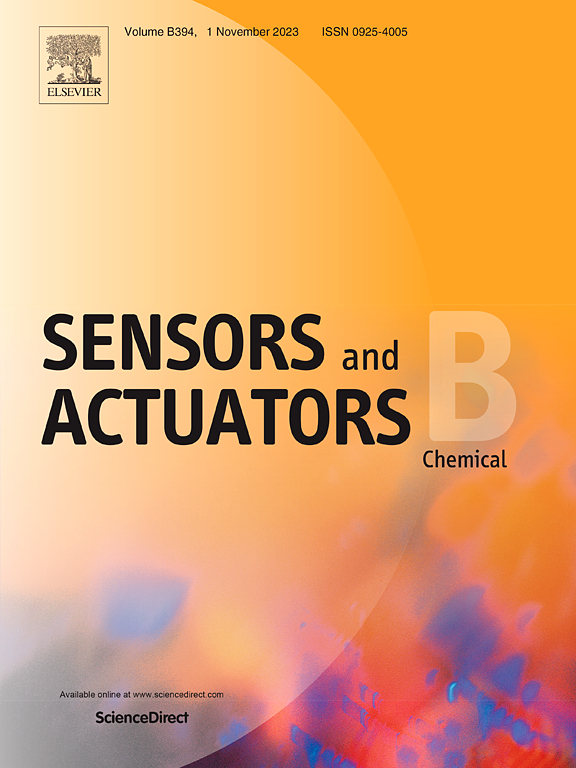基于价跃迁和防污策略的水凝胶传感界面用于神经元特异性烯醇化酶的超灵敏检测
IF 8
1区 化学
Q1 CHEMISTRY, ANALYTICAL
引用次数: 0
摘要
提高检测灵敏度和准确性一直是生物传感分析发展的重点。为了实现这一目标,设计了一种具有价态跃迁和防污策略的双功能传感接口。一方面,利用Cu+/Cu2+的转变催化生成更多的SO4•-,从而改善传感器的电化学发光(ECL)信号。另一方面,选择聚丙烯酰胺(PAM)水凝胶作为防污组分,阻止干扰生物分子与传感表面的非特异性结合。此外,引入了MXene纳米片(MXene NSs)作为导电框架和衬底。因此,制备cu20 - mxene NSs@PAM水凝胶作为信号放大和界面防污的双功能涂层。值得一提的是,KHRFNKDC被设计为短肽配体,专门结合抗体Fc片段,避免了占用抗原与抗体之间的结合位点,缩短了传感器的构建时间,提高了传感器的使用寿命。在此基础上,所构建的ECL传感器的检测灵敏度和准确度均有较大提高,线性范围为10 fg/mL ~ 100 ng/mL,检出限低至3.67 fg/mL (S/N = 3),为临床复杂血清培养基中神经元特异性烯醇化酶的检测提供了可行的方法。本文章由计算机程序翻译,如有差异,请以英文原文为准。
Hydrogel-based sensing interface with valence transition and antifouling strategies for ultrasensitive detection of neuron-specific enolase
The improvement of detection sensitivity and accuracy have been the focus on the development of biosensing analysis. In this work, a dual-function sensing interface with valence transition and antifouling strategies was designed to realize this target. On the one hand, the transition of Cu+/Cu2+ was utilized to catalyze the generation of more SO4•-, thus improving the electrochemiluminescence (ECL) signal of the sensor. On the other hand, polyacrylamide (PAM) hydrogel was selected as antifouling component to hinder the non-specific binding between interfering biomolecules and sensing surface. In addition, MXene nanosheets (MXene NSs) were introduced as the conductive framework and substrate. Therefore, Cu2O-MXene NSs@PAM hydrogel was prepared as the dual-function coating for signal amplification and interface antifouling. It is worth mentioning that KHRFNKDC was designed as the short peptide ligand to specifically bind to the Fc fragment of antibodies, thus avoiding the occupation of the binding sites between antigens and antibodies, which could shorten the construction time and improve service life of the sensor. Based on this, the detection sensitivity and accuracy of the constructed ECL sensor were greatly improved, showing a wide linear range of 10 fg/mL ∼ 100 ng/mL and a low detection limit of 3.67 fg/mL (S/N = 3), which provided a feasible way for clinical detection of neuron-specific enolase in complex serum medium.
求助全文
通过发布文献求助,成功后即可免费获取论文全文。
去求助
来源期刊

Sensors and Actuators B: Chemical
工程技术-电化学
CiteScore
14.60
自引率
11.90%
发文量
1776
审稿时长
3.2 months
期刊介绍:
Sensors & Actuators, B: Chemical is an international journal focused on the research and development of chemical transducers. It covers chemical sensors and biosensors, chemical actuators, and analytical microsystems. The journal is interdisciplinary, aiming to publish original works showcasing substantial advancements beyond the current state of the art in these fields, with practical applicability to solving meaningful analytical problems. Review articles are accepted by invitation from an Editor of the journal.
 求助内容:
求助内容: 应助结果提醒方式:
应助结果提醒方式:


